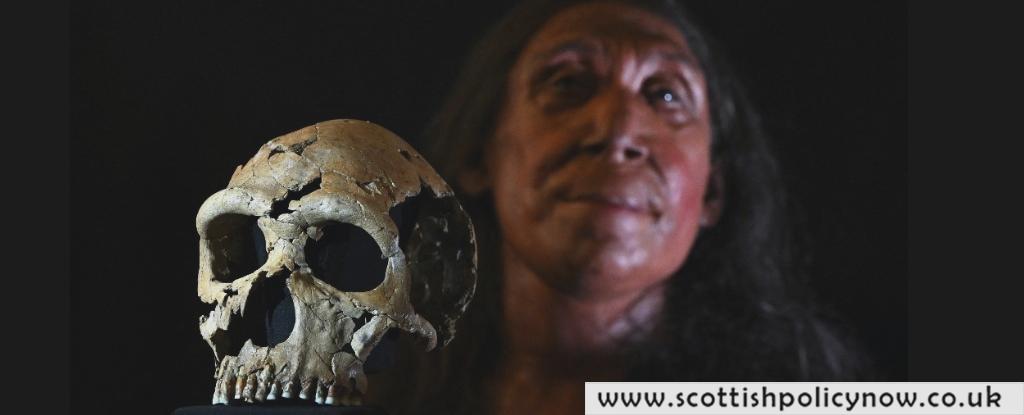A team of UK archaeologists on Thursday unveiled the reconstructed face of a Neanderthal woman from 75,000 years ago, challenging the outdated notion of Neanderthals as crude and primitive.
The woman, named Shanidar Z, was discovered in a cave in Iraqi Kurdistan in 2018 where her skull was found, leading researchers to investigate the life of this middle-aged Neanderthal who was buried in a fetal position under a large stone marker.
The lower part of her body is thought to have been unearthed in 1960 during pioneering digs by American archaeologist Ralph Solecki, who uncovered remains of at least 10 Neanderthals and suggested flower-based funerary rites based on found pollen clusters.

Due to political issues, it took nearly fifty years for teams from Cambridge and Liverpool John Moores universities to return to the site in the Zagros mountains of northern Iraq.
The last Neanderthals vanished around 40,000 years ago, shortly after the arrival of humans.
Shanidar Z’s skull, possibly the most intact Neanderthal skull found this century, was compressed to two centimeters (0.7 inches) thick, likely due to a rockfall shortly after her death.
Professor Graeme Barker of Cambridge’s McDonald Institute for Archaeological Research, who led the Shanidar excavations, told AFP the discoveries were unexpected as their initial goal was to date the burials to understand Neanderthal extinction.
Shanidar Z is identified as the fifth individual in a group buried over centuries behind a central cave rock, possibly used as a landmark for nomadic Neanderthals returning to bury their dead.
New research by team member Professor Chris Hunt of John Moores suggests the pollen leading to the “flower burial” theory might have originated from bees in the cave, though evidence like a discovered disabled Neanderthal supports their compassionate nature.
Hunt highlighted the repetitive burial pattern as indicative of tradition and knowledge transmission, challenging the harsh stereotypes commonly associated with Neanderthals.
Emma Pomeroy, the Cambridge paleo-anthropologist who found Shanidar Z, described the discovery of her skull and upper body as both thrilling and daunting.
The skeleton and surrounding earth were stabilized on-site with a glue-like substance before being transported in small, foil-wrapped blocks.
Lead conservator Lucia Lopez-Polin reassembled over 200 skull fragments as a preliminary step for a facial reconstruction featured in the new Netflix documentary “Secrets of the Neanderthals.”
Pomeroy likened the delicate task to a “high stakes 3D jigsaw puzzle” due to the fragile nature of the fragments.
The reconstructed skull was 3D-printed, allowing Dutch paleoartists and twin brothers Adrie and Alfons Kennis to add fabricated muscle and skin layers for the BBC Studios Science Unit-produced documentary.
Pomeroy noted the distinct anatomical differences between Neanderthal and modern human skulls, such as prominent brow ridges and the absence of chins, but emphasized that the reconstructed face shows these differences were less pronounced in life, underscoring the genetic mingling between Neanderthals and humans that leaves traces in our DNA today.
© Agence France-Presse








